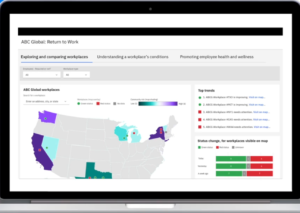Business
IBM’s ‘Watson Works’ to Address Challenges of Returning to Work (MESA)
Story Highlights
IBM has launched a new set of Watson AI-powered models and applications that aim to help companies better navigate the challenges of bringing people back to work, following extended pandemic lockdowns. Dubbed Watson Works, the products uses data-driven insights to help companies make informed decisions on everything from worker health, to facilities management, to space allocation.
“We’ve designed Watson Works to help businesses navigate the workplace with the ongoing COVID-19 health crisis as effectively as possible,” said Bob Lord, SVP of cognitive applications, blockchain and ecosystems at IBM. “Applying AI models and applications is especially useful in this context, where there are so many different sources of information businesses must consider, and every aspect of the situation is in flux.”
 Watson Works helps employers focus on:
Watson Works helps employers focus on:
• Managing facilities and optimizing space allocation using real-time data provided by WiFi, cameras, Bluetooth beacons and mobile phones, enabling managers to reallocate spaces, designate off-limit zones, and arrange for cleaning, social distancing and mask-wearing.
• Prioritising employee health by enabling employers to make data decisions around when to have employees return to the workplace, and when certain offices or worksites should remain closed.
• Facilitating the collection and analysis of real-time data from multiple sources, including area infection rates and trends, voluntarily shared employee symptoms and test results, employee household health risks, and state and local regulations.
• Communicating with employees, vendors and other stakeholders, using virtual agents and apps that use Watson’s Natural Language Processing capabilities. This provides employees answers from employers on COVID-19 and HR questions. Employees can find out what time the employer thinks is the best time to arrive at the office, to avoid overcrowding.
• Maximising the effectiveness of contact tracing by assisting organizations with support for care agents and contact tracers.
For more information, click here.









